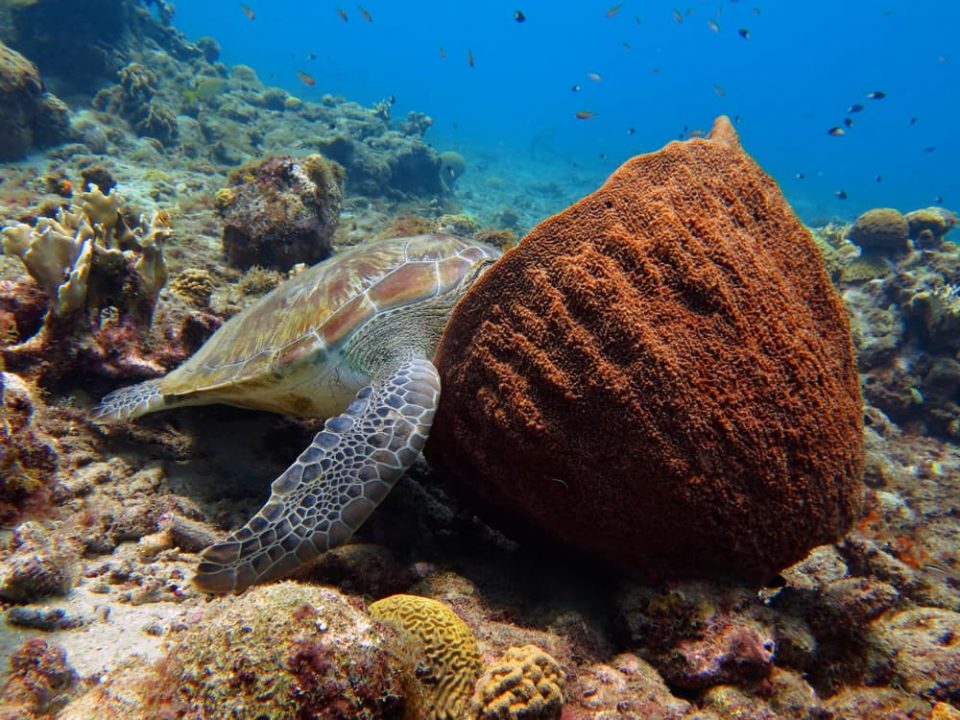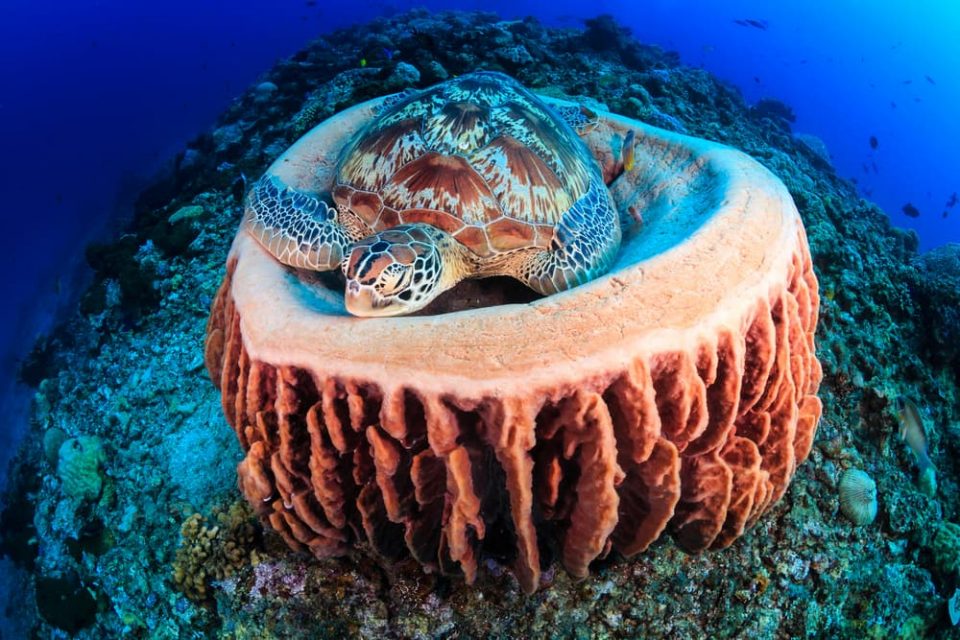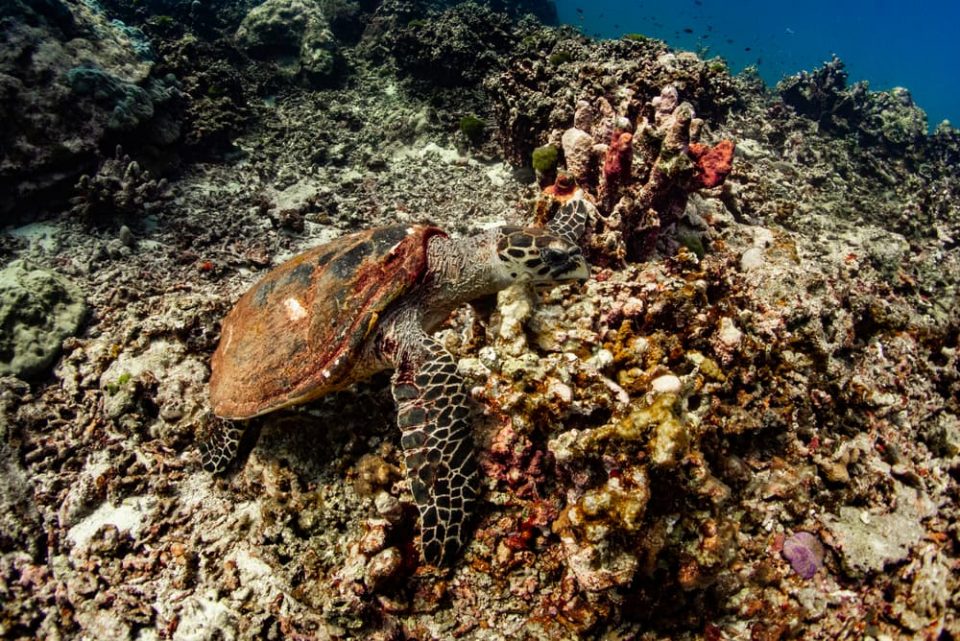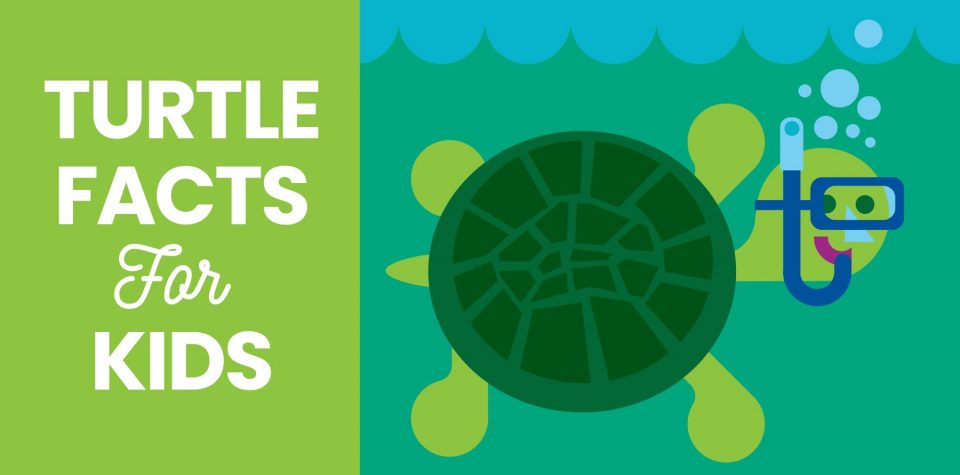
37 Turtle Facts for Kids
Turtles live all over the planet, except Antarctica, and there are more than 350 species of them, ranging from small, adorable box turtles to big dinosaur-like snappers to graceful sea turtles that seem to fly through the water.
Because turtles are so common, kids run into them not just at zoos but in the wild, in their backyards, in pet shops, and in classrooms—and that leads to lots of questions! When those curious minds come looking for answers, dig into these turtle facts for kids and shell out some knowledge.
Do Turtles Have Teeth?

Turtles don’t have teeth, but that doesn’t mean their mouths are totally smooth or they swallow food whole. Turtles have sharp beaks that they use to cut their food—whether it’s meat or plants—into pieces before swallowing it. Some turtle species also have special adaptations in their mouths and throats to help them eat. Map turtles use a secondary hard palate—a hard, bony part of the mouth—to crush their food. And leatherback sea turtles have banks of backward-facing spikes called papillae in their mouths and throats. The papillae keep the jellyfish they eat from swimming back out of their mouths once they’ve been swallowed!
The white ridge on the roof of this turtle’s mouth is its hard palate.

Turtles weren’t always toothless. One species of turtle that existed at the same time as the dinosaurs had teeth on the roof of its mouth. Scientists are still figuring out why turtles lost their teeth as they evolved, but some think that having beaks allows them to cut their food more precisely and adapt more quickly to new food sources.
Do Turtles Have Ears?
Yes, turtles have a middle ear and an inner ear. The ears are covered by a membrane called a tympanum, and you can’t even see that because it’s hidden beneath a scale. Turtles’ ears give them very good hearing at low frequencies but very bad hearing at high frequencies.

This photo of a red-eared terrapin gives a good sense of what turtle ears look like from the outside—not much! But under the red scale on the side of the turtle’s head is the tympanum, and beneath that the ear canal stretches into the head.
Turtles hear better underwater than on land because of the way their ears are built, which helps the many turtle species that spend lots of time underwater.
Do Turtles Have Tails?
Like all reptiles, turtles have tails. Tails are actually an important part of how scientists identify a turtle’s species and whether it’s male or female. Snapping turtles have long sawtooth tails—sometimes as long as their whole carapace, or shell. Male sea turtles have long tails that can be used to grasp things. All box turtles, on the other hand, have very short, stubby tails.
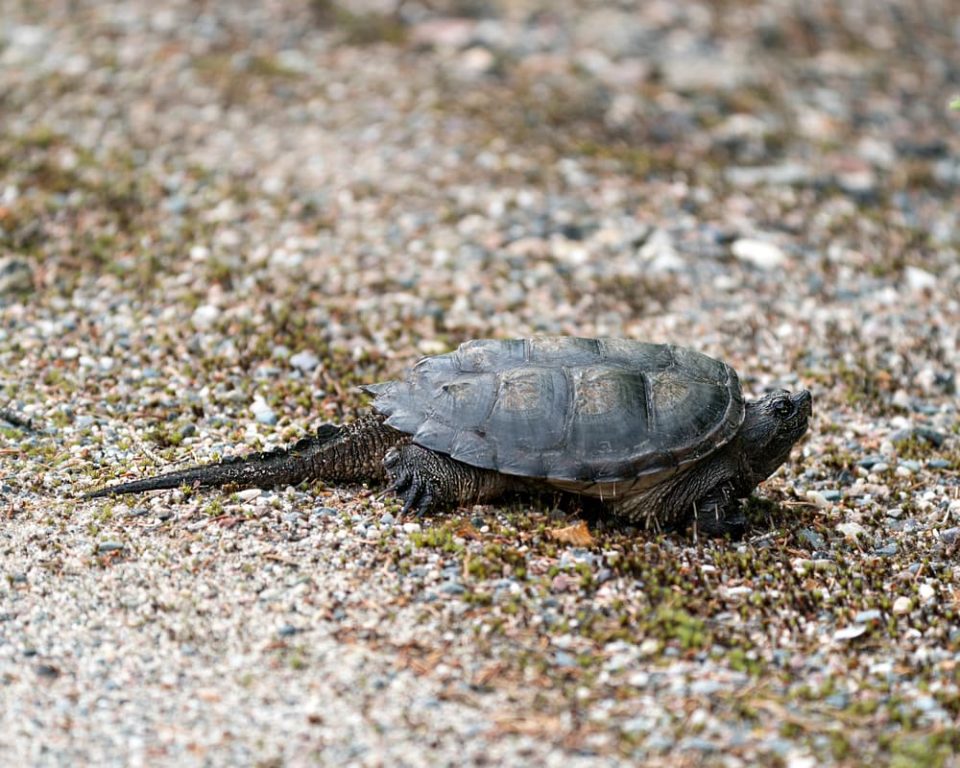

In general, the tails of male turtles are longer and thicker than those of females.
How Long Can Turtles Hold Their Breath?
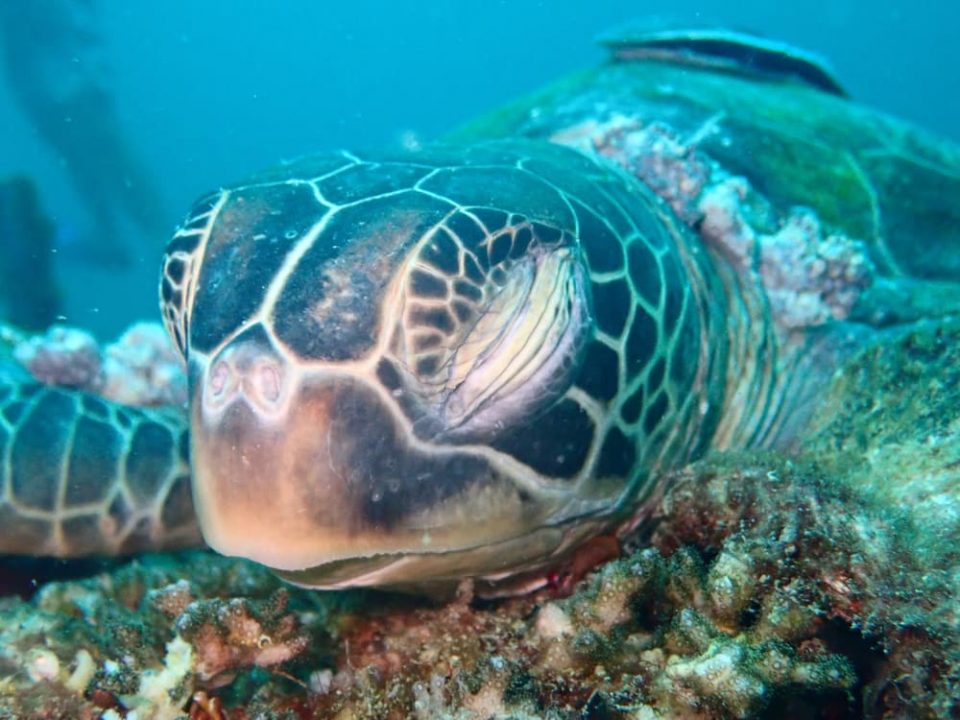
Turtles can hold their breath underwater from minutes to months, depending on their species and their activity level.
When turtles are moving around in the water a lot, they come to the surface to breathe frequently. With each breath of air, they use their lungs to take in lots of oxygen to fuel their active muscles.
But when they’re resting or hibernating, turtles can stay underwater longer, because their inactive bodies don’t need as much oxygen. And they can get what they do need directly from water by pulling it into their cloaca (an opening in their body), where it moves past blood vessels that can absorb oxygen from it—no lungs required!
Because of cloacal respiration, sea turtles often sleep underwater. Their shells and coloring blend in well with the coral they rest on, helping keep them safe. If you were a predator, especially hunting from above, you’d have a hard time seeing them!
But cloacal respiration doesn’t mean that turtles can stay underwater forever.
In a closed space like an iced-over pond, oxygen in the water can run out. And if a turtle stays underwater too long—even in the open sea—its cloacal respiration can’t keep up with its oxygen needs, and it will have to surface for a breath.

